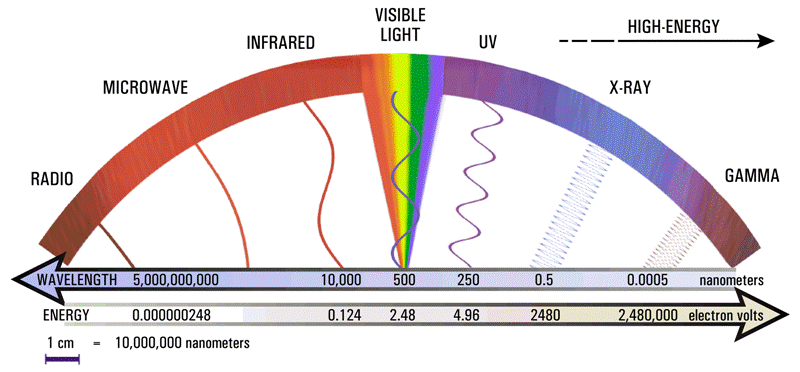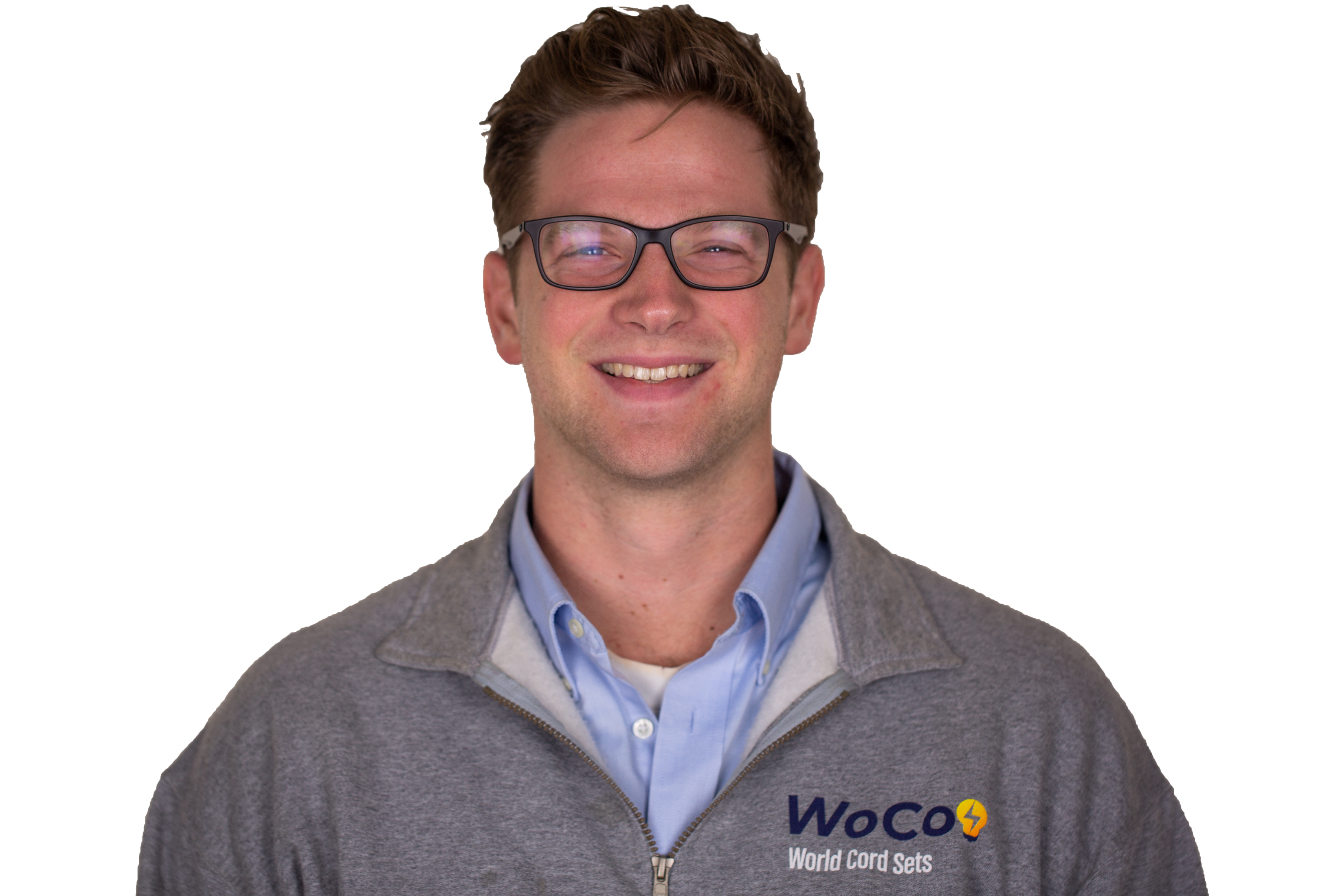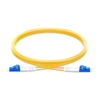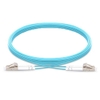Fiber Optics: Wavelengths used in Fiber Optics
Created on: Jul 2, 2019
Back to the Basics
"Wavelength" is a common term in Fiber Optics, but what does it mean? It is referring to a given length of a radiation wave on the electromagnetic spectrum. This spectrum is home to all visible light we see, as well as Infrared, X-ray, Gamma Ray, Microwaves, etc. The radiation is referred to as "wavelength" for the smaller magnitudes like UV, X-rays and visible Light. The longer wavelengths are referred to as "Frequencies". To get a better understanding of what we are dealing with, the small spectrum of light we can see "visible light spectrum", ranges from 400nm to about 700nm.

Wavelengths in Fiber
In fiber optic applications, we are concerned with the "Infra-red" Spectrum. These wavelengths used in fiber are generally ranging from 850nm to 1550nm, but you may be asking why Infrared? This is because the attenuation in the fiber is much less than other wavelengths. Attenuation is caused by Absorption and Scattering. Absorption is caused by fractional amounts of water vapor in the fiber that can impede signal transmission by changing light into heat. Scattering is caused by the reflecting of light by individual atoms that may have different reflective properties and each wavelength may be effected differently by Scattering. To learn more check out our Limiting Factors of Fiber Optics article.
The main wavelengths used in Fiber Optics are 850nm, 1300nm and 1550nm. This is because of absorption bands and ambient temperature interference. As mentioned above, absorption happens when the light passes through microscopic water vapors trapped in the fiber. Certain frequencies have a high chance of being affected by these inconsistencies in the fiber. This absorption happens at smaller wavelengths, however the longer you get the more temperature affects the signal and small background noise can impact the frequency.
Due to these "rules" we have to play by when transmitting over fiber, engineers have developed all transceivers (LED and Laser) as well as the receivers (photodetector) to operate at these frequencies. Telecom systems have also recently developed a system of transmitting several channels of information through one "wavelength" or mode of light. This is known as Wavelength-division Multiplexing and has greatly increased the potential of Fiber Optic technology. Learn more about Wavelength-Division Multiplexing.
Wavelengths for Fiber Type
Engineers have developed different compositions for fiber cores in order to solve problems such as speed, attenuation, and cost. We will review three kinds of these fiber iterations and the wavelengths used for each one.
Plastic Optical Fiber (POF) is a step-index fiber with a typical diameter of 1 mm, drastically larger than glass fiber. It is made up of materials that allow shorter wavelengths to pass through without the limiting factors discussed before. With that being said, it has a much higher overall attenuation (custom for step-index) and is usually only used at short distances. These factors combined with its relatively low cost is why POF is considered the "consumer" fiber. For standard desktop purposes it is easy to install, comparable in price to copper, and will future proof for the next decade. This fiber is best when used at 650nm and 850nm.
Multimode Graded-Index Fiber is a fiber core where the index of refraction decreases gradually as the distance from the center increases. This effectively bends the light to dampen the harshness of the reflection when it hits the cladding. This technology helps reduce Modal Dispersion in Multimode fiber, which is why this is the standard for Multimode Fiber these days. The typical operating frequency for Multimode Graded-Index Fiber is 850nm and 1300nm.
Singlemode Fiber has the smallest core size out of the three options discussed, and can only transmit one mode of light at a time. Since the diameter of the fiber is so small, it can only reflect through one layer of the fiber. Single Mode fiber also utilizes mainly laser technology which transmits the frequency with less dispersion and allows even better results. The typical operating frequency of Single Mode fiber ranges from 1490nm to 1625nm.
 Displayed is a brief overview of the difference in Wavelengths used for each type of fiber. Wavelengths are measured from peak to peak (trough to trough).
Displayed is a brief overview of the difference in Wavelengths used for each type of fiber. Wavelengths are measured from peak to peak (trough to trough).
Safety Precaution
As mentioned before, Fiber Optics transmit light frequencies that are out of our range of visibility. This doesn't mean that they are not dangerous to our eyes. Most wavelengths used will not damage your eye with a quick glance, but some technology like Dense Wavelength Division Multiplexing can potentially be dangerous. Never look into a fiber optic light source no matter the case.

Author:
Brian Sackett
Marketing & Development



